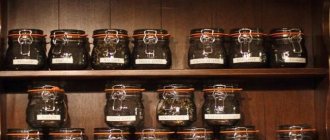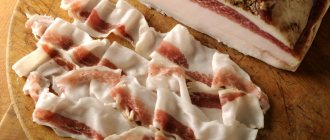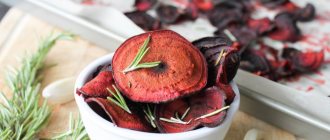Perishable raw materials are goods that require special conditions for movement and maintenance, as well as their timely preparation or consumption. This formulation for perishability is given by the Decree of the Government of the Russian Federation No. 132. Refrigerated warehouses are used for storage.
Perishable raw materials include:
- Vegetables, fruits and their purees;
- Berries, greens;
- Raw meat, lard, fats and offal;
- Dairy products and cheeses;
- Fermented milk and sterilized dairy products;
- Fish raw materials;
- Bird;
- Confectionery products made from flour;
- Prepared food and semi-finished products;
- Containing fats and products consisting of them, including mayonnaise and margarine;
- Mushrooms, eggs;
- Beverages.
Conditions of detention
- Storage of perishable raw materials is allowed at 2-6 degrees;
- It is carried out according to rules that take into account suitable indicators of temperature, humidity and lighting conditions for any type of raw material separately;
- The number of raw materials contained in the warehouse is determined by the volume of the refrigeration device used (for cooling certain products) or the scale of the space acceptable for meeting the conditions of storage during the entire shelf life of the product;
- The rules for the proximity of goods must be followed. Products with a characteristic aroma (fish, sauerkraut, spices) are stored separately from those products that perceive these aroma (butter, milk, pasta). Offal or game should not be kept near meat, as they are capable of exchanging microorganisms;
- In warehouses and fruit and vegetable storage facilities, monitoring of the conditions of raw materials, including berries, canned foods and bulk products, should be organized.
Advantages of new sanitary rules for small businesses
The new SanPiN softens some requirements for small establishments that are not designed for high flows of visitors. The defining feature in this case is the number of seats. If you have less than 25, then you can count on relaxations.
- One toilet is allowed for visitors and staff. But at the same time, its entrance must be isolated from production and storage facilities.
- It is possible to store raw and finished products in one refrigerator. But there is a condition: it must be in closed containers.
The requirement to hire separate personnel to clean the toilet has disappeared from the new rules, which is important for micro-businesses for which an extra employee entails additional expenses. This duty can be performed by other employees, the main thing is to comply with safety standards.
Requirements for premises and their equipment
Facilities for storing raw materials include:
- Refrigeration chambers;
- Storerooms;
- Unloading platform with boxes;
- Storekeeper's place.
For organizations that work with semi-finished products, appropriate refrigeration devices have been created for this purpose by type of raw material. Storage space is located in the basement, on the ground floor or on the 1st floor in the northern, northwestern or northeastern parts of the building. It is allowed to place warehouses in extensions to buildings. Storage areas should not be walk-through areas. They must be in the shape of a rectangle and have the smallest number of protrusions and turns in order to avoid unreasonable use of space and not make it difficult to maintain the space.
Contents of fermented milk products
Fermented milk products are stored in warehouses in cans or metal barrels, and those supplied in bottles or bags are stored in metal or plastic boxes that are installed on stock shelves.
Sour cream
- In a refrigeration device, sour cream ripens at 0-8 degrees. It should be kept at a temperature of no more than 8 degrees and no longer than 72 hours from the date of production;
- Diet sour cream is stored at 2-6 degrees for 48 hours.
Cottage cheese and products made from it
- Cottage cheese and products made from it (mass, paste) are kept at temperatures up to 8 degrees for no longer than 36 hours. For long-term preservation, it is frozen at -25 degrees and kept at -18: packaged - up to 4 months, in mass form - up to 6 months;
- The casserole and pudding are stored for 48 hours at 2-6 degrees;
- Cottage cheese cakes are kept at a temperature of no more than 8 degrees and no longer than 24 hours;
- Curd cheeses are stored at 0-2 degrees for 36 hours;
- Curd rolls with dried grapes are stored for 36 hours at 2-6 degrees;
- Cottage cheese pudding is stored at 2-6 degrees for 24 hours.
Oil
- Unpackaged butter, contained in refrigeration units in containers or bars, is wrapped in parchment and placed on shelves lined with cardboard or plywood. Keeping time at -18 degrees is 12 months, at -12 degrees - up to 9 months;
- Packaged oil at -3 degrees and a relative moisture content of no more than 80% is contained from the moment of distribution: 10 days - in parchment, 20 days - in foil, 15 days - in glasses and boxes made of polymers, 90 days - in metal cans;
- Oil with fillers without access to light, including fluorescent lamps, is stored for 3 days at 0-6 degrees, 20 days - above -5;
- Butter for sandwiches without access to light, including fluorescent lamps, is stored at 0-6 degrees for 3 days, at temperatures above -6 - 20 days;
- Salted oil in a monolith without access to light, including fluorescent lamps, is kept at 0-6 degrees for 10 days, at -3 degrees for 10-20 days, at -12 degrees for 6 months;
- Unsalted butter in a monolith without access to light, including fluorescent lamps, is kept at 0-6 degrees for 10 days, at -3 degrees for 10-20 days, at -12 degrees for 9 months;
- The butter bars are stored for 6 hours at 2-6 degrees;
- Ghee at temperatures from 0 to -3 is kept for 3 months if packaged in glass jars, 12 months if packaged in metal jars. Below -8 content is prohibited as the oil will turn green;
- Cocoa butter is kept in a poorly lit place in an airtight container at -18 degrees and a relative moisture content of no more than 75%. Shelf life is 6 months;
- Cheese butter is stored for 48 hours at 2-6 degrees.
It is prohibited to store oil together with fish, smoked meats, vegetables, fruits and other raw materials with a characteristic odor.
Dairy products
- Fermented milk raw materials (yogurt, kefir, Varenets) are kept at a temperature of no more than 8 degrees for 36 hours, kumiss - 48 hours;
- Cream and acidophilus are kept at 2-6 degrees for 36 hours. If there is a lack of frost - 12 hours;
- Whey drinks are kept for 48 hours at 2-6 degrees;
- Buttermilk and drinks made from it are stored at 2-6 degrees for 36 hours.
Food for children
- Kefir in bottles is stored at 2-6 degrees for 24 hours, in bags - 36 hours;
- Cottage cheese is stored for 24 hours at 2-6 degrees;
- The acidophilic mixture in bottles at 2-6 degrees is stored for 24 hours, in bags - 36 hours.
How does vacuum packaging for sausage affect shelf life?
Features of vacuum packaging
Others, on the contrary, choose this option, since vacuum packaging allows the sausage to be preserved for a long time. Today, vacuum packaging is used not only for sausages, but also for fish, meat, and even vegetables.
In this case, no preservatives are used; the products are simply placed in an airless environment. In it, almost all harmful microorganisms that lead to damage to the contents of the package do not have the opportunity to multiply and soon die. This method of storing food products has a lot of positive aspects, including:
Interesting: The Best Way to Store Onions for the Winter
You can significantly extend the shelf life of sausages and other food products.
The organoleptic qualities of the food remain unchanged - the sausage is still tasty and aromatic.
During transportation and storage, as well as on the store shelf, the product does not become dirty or gather dust.
If the package is equipped with a zip fastener, after opening it is possible not to overload the contents, but leave them in the same container.
Vacuum packaging is a great convenience for consumers.
There are practically no negative aspects to this packaging option. It can only be noted that if the bag contains sliced sausage, the pieces may begin to stick together, as the product releases moisture. This does not in any way affect the quality.
What determines the expiration date?
Vacuum packaging is an excellent option to significantly increase the shelf life of sausage, as well as protect it from negative external influences. The shelf life of such a sausage is three or even five times longer than that of a similar product, but in regular containers. This parameter may be different even for one product. It is influenced by many factors:
How fresh the product fits in the bag.
The number of aerobic and anaerobic bacteria in the sausage during packaging.
Temperature during the procedure.
How quickly was the packaging carried out?
Sanitary and hygienic conditions - the better they are, the longer the sausage will be stored.
Therefore, when cutting food, it is necessary to use only clean knives, cutting boards and packaging devices. Storage conditions are also important - what will be the temperature in the room, will the packaged goods be exposed to sunlight, etc. Only high-quality vacuum bags should be used.
Purchasing sausage in vacuum packaging allows consumers to save money, primarily by extending the shelf life. This indicator must be indicated on the label. Therefore, you should review it carefully before purchasing. In addition, it is recommended to visually inspect the packaged sausage. This will help you buy a good quality product.
Contents of semi-finished products
Semi-finished products for baking
They are used to bake bagels, pretzels, croissants and rolls with a variety of fillings based on yeast and puff pastry.
Most semi-finished products have a shelf life of up to 3 months, some have a shelf life of 6 months. They should be kept in polycarbonate freezer trays at -18 degrees.
Curd semi-finished products
Semi-finished cottage cheese products (cheesecakes, dumplings) are stored at 4-8 degrees for 36 hours. Frozen dumplings - at a temperature no higher than -10 and no longer than 15 days.
Frozen semi-finished meat products
- Frozen sliced beefsteak is stored for 48 hours at 2-6 degrees;
- Meatballs are stored for 48 hours at temperatures below -5;
- Frozen minced meat produced by a meat processing plant is stored at 2-6 degrees for 18 hours;
- Sausages and sausages are stored for 48 hours at temperatures below 0 degrees;
- Frozen semi-finished products are stored for 48 hours at a temperature of -5, 1 month - at -10.
Semi-finished meat products, frozen in blocks
- Beef blocks are stored for 12-48 hours at 2-6 degrees, no longer than 10 days at -2, 3 months at -12;
- Pork blocks are stored for 12-48 hours at 2-6 degrees, no longer than 10 days at -2, 1.5 months at -12;
- Lamb blocks are stored for 12-48 hours at 2-6 degrees, no longer than 10 days at -2, 2 months at -2.
Semi-finished meat products that have not been frozen
- Minced meat made from natural meat produced by a meat processing plant is stored for 12 hours at 2-6 degrees;
- Minced meat with soy protein is stored at temperatures below 0 for 48 hours;
- Stuffed stuffing for cabbage rolls is stored for 12 hours at temperatures below 0;
- Marinated kebab is stored at 2-6 degrees for 24 hours;
- Sliced schnitzel, Moscow, Kyiv and homemade cutlets, steak, lula kebab are kept for 12 hours at 2-6 degrees;
- Low-fat beef cutlets are stored for 12 hours at a temperature not exceeding -5;
- Potato and cabbage cutlets are kept for 12 hours at a temperature no higher than -5;
- Semi-finished poultry products (leg, fillet, tobacco chicken, thigh, drumstick, breast) are stored at 2-6 degrees for 48 hours;
- Assorted jellied meats and stews are stored for 12 hours at 2-6 degrees;
- Sliced semi-finished poultry products are stored at 2-6 degrees for 12 hours.
Frozen dumplings
Frozen dumplings are kept at a temperature below 5 for 1 day, at a temperature below -5 for 3 days, at a temperature below -10 for 1 month.
To store minced meat, chambers with temperatures from –5 to 5 are used. Ready-made dumplings are frozen in devices with low temperatures. Ready-made packaged dumplings are kept in devices at a temperature not lower than -10 and no longer than 1 month from the date of production. If there is no cold, storing, cooking and eating dumplings is prohibited.
Semi-finished fish products
It is not worth storing semi-finished fish products, since they contain a lot of water and begin to spoil quickly. If necessary, gutted and washed fish are kept in refrigeration devices and cabinets.
- Chilled fish is stored for 48 hours at 0 to -2 degrees;
- Frozen and glazed fish from 0 to -2 degrees are kept for 24 hours;
- Unfrozen fish is stored for 24 hours at -2 to 2 degrees;
- Portioned fish in breadcrumbs at 2-6 degrees is stored for 12 hours;
- Kebabs and frying are kept at -2 to 2 degrees for 24 hours;
- Cutlets, minced meat, pancakes are stored at -2 to 2 degrees for 12 hours;
- Frozen cutlets and cabbage rolls are kept for 72 hours at -4 to -6 degrees;
- Fish dumplings frozen from -4 to -6 are kept for 48 hours.
Vegetable semi-finished products
- Raw peeled and sulfated potatoes are stored for 48 hours at 2-6 degrees;
- White cabbage, radishes, radishes are stored at 2-6 degrees for 12 hours;
- Carrots, beets, onions are kept for 24 hours at 2-6 degrees;
- Parsley and celery roots are kept at 2-6 degrees for 24 hours;
- Parsley and celery are stored for 24 hours at 2-6 degrees;
- Green onions and dill are stored at 2-6 degrees for 18 hours.
Semi-finished products from vegetables that have undergone heat treatment
- Keep fruit and berry puree in barrels for a long time at 1-2 degrees, preferably in an unheated, ventilated place like a basement with a relative moisture content of 70-80%. The puree in jars is kept at 0-20 degrees;
- Jam is stored in boxes for up to 6 months, in barrels - up to 9 months at 0-20 degrees and a relative moisture content of 75-80%. If storage rules are not followed, the jam may ferment and become moldy. Then it is brought to a boil with sugar;
- It is worth keeping jam in jars and barrels: sterilized - at 0-20 degrees, not sterilized - at 10-20 degrees. If overheated, the jam will ferment, and if cold, it will become sugary;
- Casseroles from cabbage, carrots, potatoes with meat are stored for 18 hours at 2-6 degrees;
- Cutlets made from cabbage, carrots, beets and potatoes are stored at 2-6 degrees for 18 hours;
- Cabbage schnitzel, cabbage and carrot mince are stored for 12 hours at 2-6 degrees;
- Pickled cucumbers, boiled and peeled beets and carrots are stored at 2-6 degrees for 24 hours;
- White cabbage and chopped peeled potatoes are stored for 12 hours at 2-6 degrees;
- Sauerkraut stewed cabbage is stored at 2-6 degrees for 72 hours;
- Sauteed onions and carrots are stored for 48 hours at 2-6 degrees;
- Semi-finished cabbage rolls with various fillings are stored at 2-6 degrees for 12 hours;
- Potatoes, chopped peeled carrots and beets are stored for 18 hours at 2-6 degrees;
- Unpeeled vegetables are stored at 2-6 degrees for 6 hours.
Frozen fruits and vegetables are stored at -18 degrees and a relative moisture content of 90-95% for 9-12 months. After defrosting, they should be consumed immediately.
Storing prepared food
Sausage products
- Boiled sausage is kept in a container at a temperature not lower than 0 and not higher than 8 degrees, and also at a relative moisture content of 75-80%;
- Semi-smoked and smoked sausages are kept hanging at a temperature not exceeding 12 degrees and a relative moisture content of 75-78%;
- Smoked meat products are kept in a hanging state, while boiled and smoked-cooked products should not come into contact. Baked smoked meats are placed on racks;
- Jellied meat in the shell is kept for 36 hours at 2-6 degrees;
- Boiled hams and rolls are kept at 0-4 degrees for 72 hours, at temperatures below 8 - 24 hours;
- Boiled products in casings (assorted ham, breakfast ham) are kept for 72 hours at 2-6 degrees;
- Boiled stuffed sausages are kept for 72 hours at 0-8 degrees;
- Placed in a polymer film: boiled sausages, raw materials from pork, beef and lamb are kept for 48 hours at 2-6 degrees;
- Liver sausage is kept for 12 hours at 2-6 degrees;
- Sausages for children are kept for 36 hours at 2-6 degrees;
- Boiled poultry sausages are kept for 72 hours at 2-6 degrees;
- Smoked sausage is kept for 48 hours at 2-6 degrees;
- Semi-smoked and boiled-smoked sausages are kept at 0-4 degrees for 10 days, at temperatures below 8 - 3 days;
- Raw smoked sausages are kept at 0-4 degrees for 30 days, at temperatures below 8 - 15 days;
- Raw smoked ham products (leg, breast) are kept at 0-4 degrees for 30 days, at temperatures below 8 - 10 days, from -7 to -9 - up to 4 months;
- Raw smoked sausages with a relative moisture content of 75-78% and 12-15 degrees are kept for 4 months, from -2 to -4 - 6 months, from -7 to -9 - 9 months;
- Cooked-smoked sausages at a relative moisture content of 75-78% and 12-15 degrees are kept for 15 days;
- Cooked-smoked sausages, placed in boxes, are kept at a temperature from 0 to -4 for 1 month, from -7 to -9 - 4 months;
- Semi-smoked sausages with a relative moisture content of 75-78% and a temperature below 12 are kept for 10 days;
- Semi-smoked sausages placed in boxes are kept at temperatures below 6 for 15 days, from -7 to -9 - 3 months, at temperatures below 20 - 3 days;
- Raw smoked pork products at 5-8 degrees in a serving cut are kept for 15 days, in a portion - 20 days, at 12-15 degrees in a serving cut - 10 days, in a portion - 15 days;
- Semi-smoked sausages at 5-8 degrees in portions are kept for 8 days, raw smoked sausages at 15-18 degrees in portions are kept for 6 days;
- Half-smoked sausages at 5-8 degrees are kept in a serving cut for 10 days, in a portion for 12 days, at 12-15 degrees in a serving cut for 6 days, in a portion for 8 days.
Canned food
- Canned meat is kept in boxes placed on shelves at an air temperature of no higher than 15 degrees and a relative moisture content of no more than 75%. Canned food made of metal and glass lasts up to 3 years. The shelf life of pasteurized canned meat at 0-5 degrees is no more than 6 months;
- It is better to keep preserved fish at temperatures from -8 to 0 degrees, without freezing them, and at a relative moisture content of no more than 75%.
Salads
It is prohibited to store ready-to-eat and undressed salads together with raw, unprocessed vegetables.
- Salads from red cabbage and beets with horseradish are kept for 24 hours at 0-4 degrees;
- Sauerkraut salad is stored at 2-6 degrees for 24 hours;
- Undressed meat, capital, and fish salads are stored for 12 hours at 2-6 degrees.
Pickles
- Sauerkraut is packaged in glass boxes and placed in barrels. Keep at temperature from -1 to -4. Allowed to be stored in non-refreshing spaces and at a temperature not exceeding 10 degrees;
- Pickled and pickled cucumbers and tomatoes are kept at a temperature no higher than 4 degrees and a relative moisture content of 85-90%;
- Pickled vegetables and fruits in sealed boxes are stored in dry, refreshing spaces at 0-15 degrees.
Storage of berries, vegetables and fruits according to GOST
In order to preserve products in a presentable form and with useful properties, it is important to adhere to optimal storage conditions, under which the processes of rotting and spoilage will significantly slow down.
For unripe vegetables and fruits, conditions are required under which the process of fruit ripening occurs. On average, the relative humidity for most vegetables and fruits is between 85-95%. In accordance with the SanPiN resolution, the following storage conditions are provided:
| Name of vegetable/fruit | Temperature (in OS) | Storage period (in days) |
| eggplant | 7-12 | 7-14 |
| sprouts (Brussels sprouts) | 0 | 20-30 |
| cabbage) | 0 | 30-90 |
| carrot | 0-2 | 120-180 |
| potato | 5-15 | 150-180 |
| cucumber | 2-7 | 10-14 |
| tomato | 5-15 | 7-14 |
| beet | 0-2 | 60-180 |
| celery | 0-2 | 14-90 |
| banana | 12-18 | 3-10 |
| a pineapple | 12-18 | 7-14 |
| cherry | 0-2 | 14-30 |
| strawberry | 0-2 | 3-10 |
| lemon | 5-15 | 120-180 |
| cherries | 0-2 | 7-21 |
| apple | 2-7 | 120-180 |
| mandarin | 2-7 | 14-90 |
Briefly about the main thing
Compliance with the above established standards for the content of perishable raw materials will not only not cause problems with the structures responsible for this, but will also increase customer trust and loyalty. Deviation from these rules and maintenance periods can lead to the proliferation of microorganisms, which will not only lead to damage to raw materials, but will also lead to bacterial poisoning and intestinal diseases.
Make sure that all the rules of your grocery warehouse are followed, and you will remain a proven and reliable distributor for your customers.










